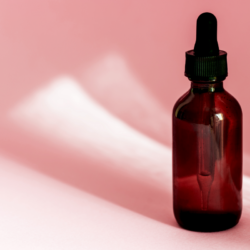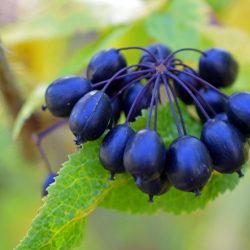If there’s one medicinal plant that can be found all summer long by streams and in damp, sandy places where it thrives, it’s horsetail. Common and seemingly banal, this is an extraordinary plant, one of those that have survived the ages, just like ginkgo biloba. Horsetail is a very old lady, over 270 million years old.
What is horsetail?
Horsetail (Equisetum arvense), also known as Horsetail, Rat’s-tail or Fox-tail, belongs to the Equisetaceae family and the Pteridophytes group. This plant has a variety of ethnopharmacological uses, with potential new uses currently being studied.
This perennial plant, measuring between 20 and 50 cm, has two types of stem: fertile and sterile. The leaves, reduced to simple collars, are located at the nodes of the stems and branches. They take the form of short, toothed sheaths. In Horsetail, these sheaths have 6 to 12 dark-coloured teeth.
The sterile stems, formed from April-May onwards, emerge from an underground rhizome and multiply rapidly. They bear whorls of spindly, quadrangular branches in the shape of a four-pointed star.
The fertile stems of Horsetail are unbranched and do not bear whorls of twigs. They have an oblong terminal spike that produces green spores. This plant grows on almost every continent. It prefers damp areas and neutral sandy-loam soils. Dating from the primary era, it is considered a living fossil.
The sterile stems of Horsetail are used in phytotherapy. They are known for their diuretic effects and their high silica content. Silica stimulates the formation of collagen in bones, cartilage and tendons. The plant can also be used to treat gout, biliary problems,osteoarthritis, post-traumatic oedema, fractures and osteoporosis. It also helps to heal wounds. It is also one of the ingredients in food supplements designed to strengthen hair and nails.
Phytochemical profile
Veit et al (1995) noted that Horsetail has a phytochemical profile rich in silicic acid (up to 70% silica in soluble form), flavonoids and manganese.
In 2007, veterinary surgeon Bob Wright, citing JM Kingsbury (1964), noted that Equisetum contains silicates,aconitic acid,palmitic acid, traces of three alkaloids, 3-methyloxypyridine, dimethylsulfone and a problematic enzyme, thiaminase. This enzyme can inhibit thiamine (vitamin B1). This could explain certain symptoms in horses. However, it does not account for all the neurological symptoms observed.
Among the alkaloids, three are frequently cited:equisitine, palustrine (absent from Horsetail but found in other species) and nicotine, present in variable quantities. Horsetail also contains several other components of medicinal interest, such as glucosides, flavonoids, saponosides, saponins (equisetonin and equisetogenin), triterpenoids, tannins, calcium carbonate, as well as potassium, manganese, iron and aluminium. It is also rich in vitamin C.
A little history
Equisetum arvense, or Horsetail, is one of the first plants to appear on Earth. It has survived the various geological periods, including the Palaeozoic era, without major modification. These unique characteristics have attracted medical interest since ancient times.
Its rich history dates back to Pliny the Elder. He called it “the hair of the earth” and used it in a salad of young shoots as a tonic and restorative. Horsetail is widely used in phytotherapy, often prescribed for a variety of treatments.
The aerial parts of the sterile stems are generally used in infusions, decoctions, juices, powders, alcoholates, SIPF (Suspension Intégrale de Plante Fraîche), mother tinctures or, experimentally, as essential oils. In some countries, such as Romania, the roots are also used to treat inflammation,ulcers, skin tumours and other skin or dermatological conditions.
North American Amerindians used Horsetail to treat toothache. They also believed it to have analgesic properties. Its high mineral content, especially in silica, potassium and calcium, gives it remineralising and diuretic properties. Historically, it was prescribed to strengthen the skin and connective tissue. It also treats fragile cartilage, tendons, bones and acne.
In traditional Indian medicine, it is used to strengthen bones and skin. Since the 1990s, numerous studies have confirmed its medicinal virtues, particularly as a diuretic and in the treatment of genitourinary diseases,inflammation, scarring, rheumatic diseases, prostatitis and hypertension. Although not always as effective as synthetic medicines, Horsetail has the advantage of having no side effects.
What are the main pharmacological properties of the sterile aerial parts of Horsetail?
The sterile aerial parts of Horsetail, also known asEquisetum arvense, have many interesting pharmacological properties. The mechanisms of action of Horsetail are still relatively unknown. This plant is characterised by a high concentration of silica (silicic acid and silicates), enriched with flavonoids such as quercetol, saponins (natural soaps) and nicotine. Silica plays a crucial role in the renewal of connective tissue, which supports the organs, and in fixing calcium in the bones.
In this section, we will explore the main medicinal properties of Horsetail and how these parts of the plant can be used to treat various health conditions.
Trophic action on bones and connective tissue (skin, blood vessels)
Several studies have shown that horsetail can be used to stimulate osteogenesis. In vitro, E. arvense induces osteogenesis, in particular by stimulating the activity of osteoblasts and showing osteoinductive activity. In vitro, the plant inhibits osteoclastogenesis, which slows down bone resorption. In addition, a 2003 study showed in vitro that when osteoblasts come into contact with glass slides to which silica has been fixed, they increase their production of type I collagen.
In human medicine, despite a methodology deemed weak, a randomised placebo-controlled trial in 1999 involving 122 post-menopausal women showed that long-term intake of horsetail extract, or a combination of calcium and horsetail, was associated with a greater increase in bone density in the participants than in the placebo group.
Silicon, of which horsetail is rich, promotes bone mineralisation, a role that has been demonstrated in patients. With delayed bone consolidation. It has also been shown that a plant complex containing silica from horsetail has anti-elastase activity (elastin being responsible for the elasticity of the dermis).
In humans, a randomised placebo-controlled trial demonstrated the effectiveness of a horsetail-based ointment in treating pain and promoting healing after episiotomy.
Diuretic and urinary properties
The plant also contains several active ingredients, such as certain flavonoids, which explain its diuretic and hypo-uricemic action. It promotes urinary elimination of flavonoid metabolites and hydroxycinnamic acids, polyphenolic compounds present in the daily diet in the form of tea and vegetables.
In a randomised double-blind clinical trial conducted in 2014 with 36 healthy male volunteers, E. arvense (Horsetail) extract demonstrated a more potent diuretic effect than the negative control, and comparable to that of hydrochlorothiazide, without causing significant changes in electrolyte elimination. This plant is used for its diuretic effects in the treatment of various problems, including :
- Kidney, digestive and urinary problems. In Saudi Arabia and other countries, it is used to treat gout and hypertension, and to prevent urinary calculi. It reduces urinary creatinine levels, as observed in laboratory tests on rats.
- Used as a urinary tract drainer to supplement fluid intake, in irrigation therapies. It also helps to treat infections and inflammation of the urinary tract and to evacuate small kidney stones.
Horsetail’s mild diuretic properties are attributed to its flavonoid and saponin content. An uncontrolled clinical study indicated that the plant can increase urinary flow and prevent kidney stones. More recently, a study in Japan revealed that a preparation containing four plants, including Horsetail, reduced certain symptoms of benign prostatic hyperplasia.
Anti-inflammatory, immunomodulating and analgesic properties
Antioxidant, cell-protective, antiproliferative and anti-infectious properties
Horsetail (Equisetum arvense) has significant antimicrobial properties, particularly in its essential oil. Aqueous and ethanolic extracts have shown effects against antibiotic-resistant pathogenic bacteria. These include Staphylococcus, Bacillus, Escherichia coli, Klebsiella and Candida.
In vascular endothelial cells subjected to hyperosmotic stress, an extract of this horsetail showed an antibacterial effect. It reduced oxidative stress,inflammation and apoptosis. A study in 2020 confirmed the antioxidant effect of the ethanolic extract of Equisetum arvense. It also revealed a cytotoxic and suppressive effect against the human pancreatic carcinoma cell line ASPC-1 . This suggests its potential as an anti-cancer agent for pancreatic carcinoma.
Horsetail has demonstrated dose-dependent antiproliferative properties, probably due to the natural antioxidants it contains. Aqueous extracts or extracts obtained using various solvents inhibited cell growth and trapped peroxyl radicals. In 2017, Nunes et al. linked the antioxidant activity of horsetail to its phenolic compound content. Its immunomodulating properties could make it useful in the fight against certain cancers.
Several in vitro studies have highlighted its ability to :
- A 2004 study revealed that phenols and flavonoids isolated from Equisetum arvense scavenge free radicals and protect hepatocytes against tacrine-induced cytotoxicity.
- In 2007, an aqueous extract of horsetail was shown to inhibit growth and induce apoptosis in human leukaemia cells.
- In 2017, an ethanolic extract showed cytotoxicity and apoptotic action on lung carcinoma cells.
- A 2018 study confirmed that horsetail extracts modulate oxidative stress and induce antibacterial activity.
In vivo, a 2017 work demonstrated that horsetail ethanolic extract protects against the mutagenic effects of cyclophosphamide and ameliorates chromosomal damage, suggesting a potential role as a chemopreventive agent.
Other properties
Horsetail (Equisetum arvense) has a variety of therapeutic uses. In China, it was used to treat nosebleeds and prevent haemorrhaging. It is also reputed to protect the liver and treat jaundice and hepatitis. Isolated phenolic petrosins (onitine and onitine-9-O-glucoside) and flavonoids (apigenin, luteolin, kaempferol-3-O-glucoside and quercetin-3-O-glucoside) have shown hepatoprotective effects in human cell cultures.
The plant is also used to prevent convulsions and oedema, treat menorrhagia, and improve sleep and certain anxiety disorders. An Indian university study compared the sedative and anxiolytic effects of different E. arvense extracts in mice, finding that the ethanolic extract had effects comparable to diazepam.
Chronic administration of hydroalcoholic extract in rats improved memory without toxicity. It reduced thiobarbituric acid-reactive substances and nitrite formation. These beneficial effects are due to horsetail’s antioxidant properties.
Applied topically, horsetail has been shown to have healing effects. It is effective on episiotomy scars in women. According to Suntar et al (2012), the antioxidants in horsetail improve healing by eliminating reactive oxygen species.
Horsetail has anti-diabetic properties observed in rats. Horsetail extract modulated insulin sensitivity in these rats. Its silica and silicic acid content makes it useful for treating post-traumatic oedema and accelerating wound healing. This use is also supported by studies demonstrating its pain-relieving and anti-inflammatory effects .
Horsetail toxicity
In the 1990s, toxicological data on the side effects of horsetail was limited. However, a closely related species, Horsetail, was considered toxic to livestock in wetlands, mainly due to its high alkaloid content.
With regard to the specific toxicity of Equisetum arvense L., recent studies on animal models and human cell cultures indicate no or very low toxicity.
In Japan, tests carried out by Miwa and Sakuma in 2009, then by Tago et al. in 2010, indicated very low or no toxicity from Horsetail. Studies on rats revealed no toxicity in terms of clinical signs, body weight, organ weight, urinalysis, or haematological and serum biochemical data. No histopathological lesions were associated with these treatments. The no-observed-adverse-effect level (NOAEL) is estimated to be more than 3% of the diet in rats.
As far as toxicity to cattle and horses is concerned, Horsetail is not generally appreciated by herbivores in the wild. However, if present in large quantities in harvested hay, it can be ingested by domestic animals. In such cases, it can cause poisoning, sometimes fatal, in cattle and horses.
A theory from the 1950s suggests that the high silica content of Horsetail could have a laxative effect on horses. In Switzerland, horsetail was used as a diuretic infusion for cows and to treat mastitis. Another study suggested the presence of an alkaloid that could explain the plant’s toxicity.
Are there any precautions to be taken when using Horsetail?
Horsetail (Equisetum arvense) is useful for many treatments, but should be used with caution due to contraindications and the risk of undesirable effects or interactions. People suffering from heart or kidney oedema should avoid this plant. It is not recommended for pregnant or breast-feeding women, due to the nicotine present. It is also not recommended for use by children under the age of twelve.
Side effects of horsetail include minor digestive problems, seborrhoeic dermatitis and sometimes allergic skin reactions. Excessive consumption may lead to vitamin B1 (thiamine) deficiency. Symptoms of nicotine intoxication have been reported in children chewing horsetail stems.
Horsetail can increase urinary excretion, risking excessive loss of potassium. This may be exacerbated by the combined use of diuretics, irritant laxatives, drugs for heart rhythm disorders or bipolar disorder. Medical supervision is recommended when combined with diuretic drugs. Treatment requires adequate fluid intake.
Applied topically, horsetail has been shown to have healing effects on rats and humans, particularly on episiotomy scars. Its antioxidant properties may improve healing. It has also been shown to have anti-diabetic properties, modulating insulin sensitivity in diabetic rats.
In Canada, horsetail extracts must be free from thiaminase, an enzyme that can break down thiamine if consumed in excess. Cooking at 100ºC or preparing in an alcoholic or alkaline solution deactivates this enzyme. It is important not to confuse Horsetail with Marsh Horsetail (Equisetum palustre), which contains toxic substances in small doses.
How should Horsetail be taken and at what dosage?
Horsetail is a medicinal plant commonly used to treat various health problems. It is crucial to know how to use Horsetail in order to benefit fully from its medicinal properties.
Available as a dried plant, capsule or liquid extract, Horsetail has a number of applications. For an infusion, mix 2 to 4 g of dried plant with 150 ml of boiling water. Drink this infusion three or four times a day, particularly for minor urinary problems. For external use, apply the cooled decoction to superficial wounds. In the event of urinary problems, it is vital to drink at least two litres of water a day when taking Horsetail.
- As a dietary supplement, in the form of plant totum powder in capsules.
- Standardised fresh plant extract for officinal preparation: 5 to 10 ml per day in a glass of water.
- Whole suspension of fresh plant: 5 to 15 ml per day in water.
- Macerate: 15 drops, 2 times a day in water.
- Hydroalcoholic extract: 20 to 30 drops, 2 to 3 times a day in water, fruit juice or herbal tea.
- Infusion: Infuse 1 teaspoon of dried horsetail in 150 ml of boiling water for 10 minutes, 2 to 3 or even 4 cups a day.
What the health authorities think
The diuretic activity of Horsetail has been confirmed in animal studies. However, clinical studies on human patients are lacking to confirm its efficacy in humans. What’s more, it has not been shown to be of any specific benefit in slimming diets.
The European Medicines Agency (EMA) recognises the oral use of Horsetail. It is traditionally used to treat minor urinary problems. However, the EMA advises against its use for longer than four weeks. Nor is it recommended for children under the age of twelve. The EMA also accepts the traditional use of Horsetail decoctions. These decoctions are used as an adjunct treatment for superficial wounds, applied topically to people over the age of 12.
Commission E of the German Ministry of Health also approves the traditional use of this plant. It is used to manage post-traumatic and static oedema. As a diuretic, it is used to treat urinary tract infections. This is accompanied by irrigation therapy involving high fluid consumption. Horsetail also helps to heal wounds.
Medical bibliographical sources and clinical trials
- Benaiges A. et al, Study of the refirming effect of a car plant complex, Int J Cosmet Sci, 1998
- Bosetti M. et al, Type I collagen production by osteoblast-like cells cultured in contact with different bioactive car glasses, J Biomed Mater Res A, 2003
- Graefe E.U. et al. Urinary metabolites of flavonoids and hydroxycinnamic acids in humans after application of a crude extract from Equisetum arvense; Phytomedicine, 1999
- Costa-Rodrigues J. et al, Induced in vitro car osteogenesis by Equisetum arvense. 6th Marie Curie Cutting Edge Conference Stem Cells: From the Petri dish to the clinical application, Portugal, 2008
- Bessa Pereira C. et al, Stiulatory effect of Equisetum arvense extracts on the proliferation of MG63 osteoblast-like cells. VIII International Symposium on Experimental Techniques, Portugal, 2007
- Oh H. et al, Hepatoprotective and free radical scavenging activities of phenolic petrosins and flavonoids isolated from car Equisetum arvense; J Ethnopharmacol, 2004
- Gründemann C. et al, Equisetum arvense (common horsetail) modulates the function of inflammatory immunocompetent cells; BMC Complementary and Alternative Medicine, 2014
- Pallag A. et al, Equisetum arvense L. Extract Induces Antibacterial Activity and Modulates Oxidative Stress, Inflammation, and Apoptosis in Endothelial Vascular Cells Exposed to Hyperosmotic Stress; Oxid Med Cell Longev, 2018
- Steinborn C. et al, In vitro Anti-inflammatory Effects of Equisetum car arvense Are Not Solely Medi-ated by Silica; Planta Med., 2018
- Al Mohammed H.I. et al, Anticancer activity of EA1 extracted from Equisetum arvense, Pak J Pharm Sci, 2017
- Dragos D. et al, Phytomedicine in Joint Disorders, Nutrients, 2017
- Car neiro D.M. et al. Randomized, Double-Blind Clinical Trial to Asses the Acute Diuretic Effect of Equisetum arvense (Field Horsetail) in Healthy Volunteers; Evid Based Complement Alternat Med. 2014
- Garcia D. et al, Equisetum arvense hydro-alcoholic extract ; phenolic composition and antimycotoxigenic effect against Aspergillus flavus and Fusarium car verticillioides in stored maize, J Sci Food Agric, 2013







